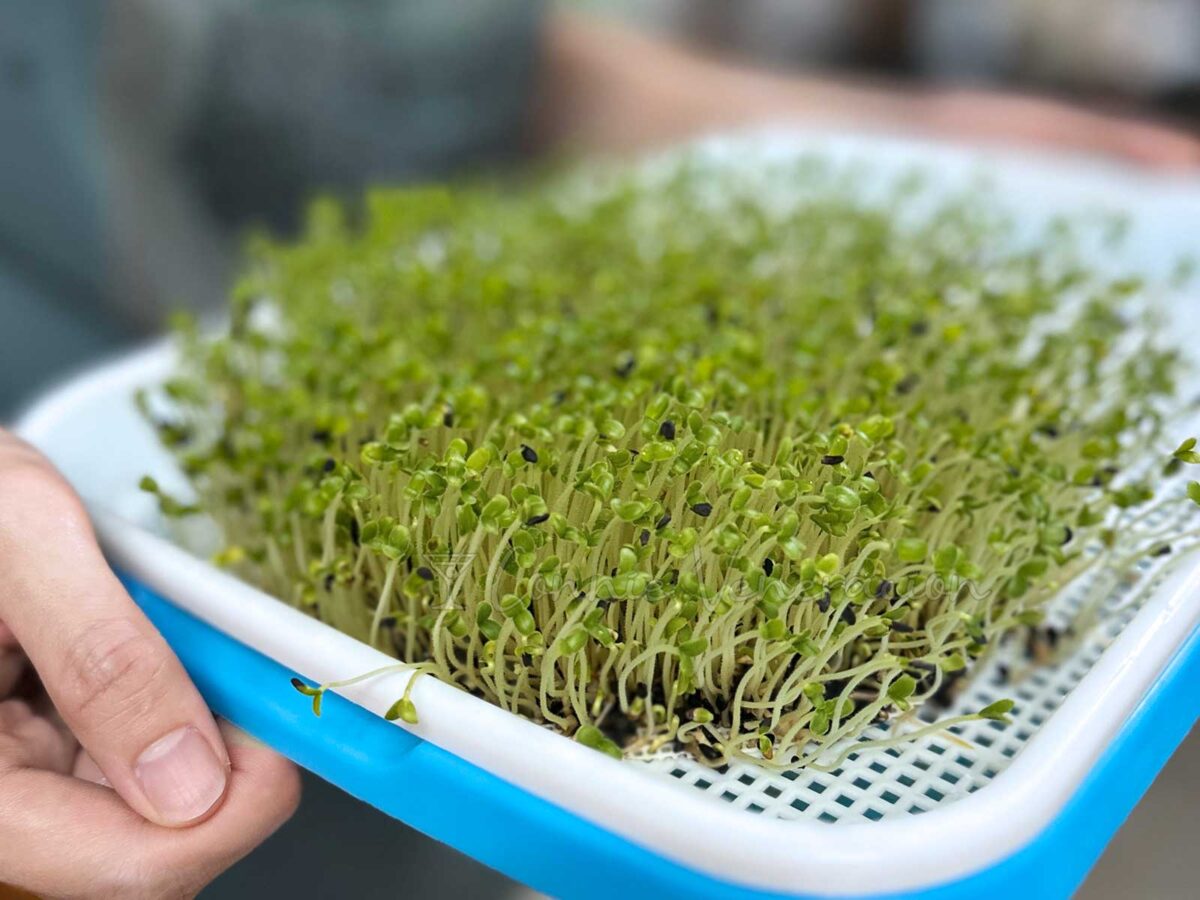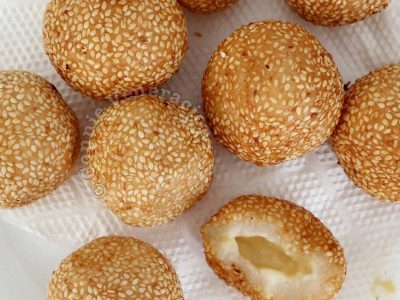Sesame seeds that had been sitting in the freezer for over a year were soaked and left to sprout. I don’t know what’s more surprising: that the seeds actually sprouted or the rush of flavors in my mouth.
As I’ve been whining in my last two posts, our herb and vegetable garden is parched so we’ve been growing microgreens instead. Some of the seeds we recently bought online were no good so my daughter Alex turned her attention to seeds that we already have in storage because we use them for cooking.
Sesame seeds, we store in bulk: white, black and a tri-color mix. We keep them frozen to prolong shelf life. And, yes, because they retain their oil and aroma better that way. In short, the chance that they will turn rancid before we consume them is very slim.
Sprouting sesame seeds
Alex took the jar of black sesame seeds from the freezer, soaked them for four hours, spread them on a tray lined with silicone steamer mat and left them in the dark. They needed to be sprayed with water daily but no sunlight until they were already about two inches tall. From that point, they were exposed to indirect sunlight for a few hours each day.

On the sixth (it may have been the seventh) day, the sprouts were harvested and tossed with cubed tomatoes to make a simple salad.
Flavors and texture of sesame sprouts
Tip: After harvesting, rinse lightly then give the sesame sprouts a quick whirl in the salad spinner. The sprouts are delicate, the white stalks are watery, but you do want to remove the surface water and retain only what is stored in the stalks. The sensation in the mouth is better that way. Lightly crisp and dry on the surface.
And just what do sesame sprouts taste like? There is no singular flavor. The first thing you get is sweetness, then it’s sour and salty, and, finally, there’s bitterness. Not bad bitterness but good bitterness. If you like arugula, you will likely enjoy sesame sprouts.








